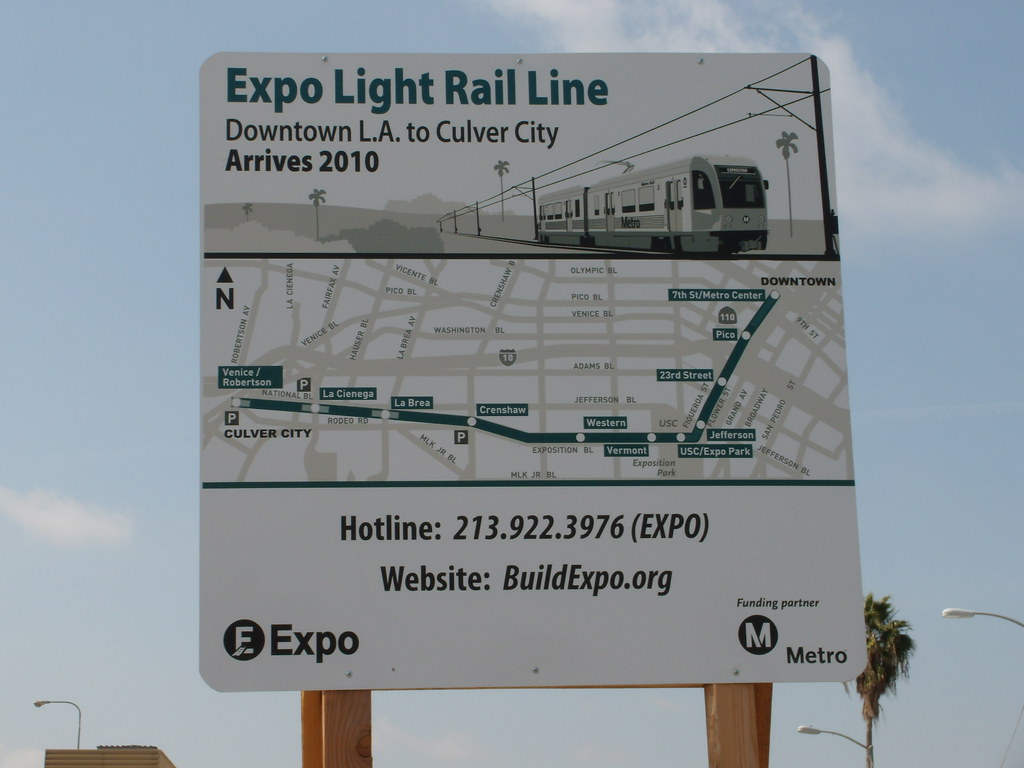Our View: Metro should heed advice - SGVTribune.com
Our View: Metro should heed advice
Posted: 10/21/2009 05:37:03 PM PDT
IT'S not often that Southern California's congressional delegation comes together on an issue in a truly bipartisan way.
But
a letter sent Tuesday (see Guest View) to the Metro board urging that
the Gold Line Foothill Extension and two other projects be added to its
long-range transportation plan was signed by everyone from Republican
Reps. David Dreier and Gary Miller to Democratic Reps. Grace Napolitano
and Maxine Waters.
Fourteen Congress members in all signed the
letter, led by Dreier, Napolitano, Adam Schiff (who authored
legislation when serving in Sacramento that created the existing Gold
Line)and Judy Chu.
When this many Congress members speak - from
Jerry Lewis and Mary Bono Mack on the right in the Inland Empire to
Diane Watson and Jane Harman on the left and in Los Angeles - it would
behoove Metro, also known as the Los Angeles County Metropolitan
Transportation Authority, to listen.
The members asked the Metro
board to put the Foothill Extension, the Gold Line Eastside Extension
Phase II (through South El Monte and Whittier) and the Crenshaw/South
Bay Transit Corridor to LAX on its New Starts funding priority list
when the board meets today in L.A.
The L.A.-centric Metro board,
led by L.A. Mayor Antonio Villaraigosa, has favored the Westside
subway-to-the-sea project over the two Gold Line extensions.
"In order to maximize federal funding we strongly urge you to broaden the County's federal strategy,"
BREAKING:
Mom Loses 52 lbs With 1 Rule!I Cut Down 52 lbs of Stomach Fat In A
Month By Obeying This 1 Old Rule See the results... Los Angeles-Mom
Lost 47lbs With 1 Rule!I Cut Down 47 lbs of Stomach Fat In A Month By
Obeying This 1 Old Rule Get details...
Quantcast
the Congress
members wrote. They pointed out that the subway and another heavy-rail
project favored by Metro were unlikely to gain funding from the federal
New Starts process in as little as three years, which would be possible
for the shovel-ready Gold Line light-rail projects.
"If the
board does not include these projects, we leave hundreds of millions of
federal dollars on the table that will be directed elsewhere in the
country," said Schiff, adding that Metro cannot afford to miss the
chance to bring dollars and jobs to the region.
Dreier
emphasized the broad, bipartisan group of Congress members wanting to
prioritize the entire region's needs and to "help secure the federal
resources needed to create jobs and invest in an infrastructure that
works for all Southern Californians."
Of particular interest to
San Gabriel Valley as well as Inland Empire residents, the letter
stated in part: "The Gold Line Foothill Extension project, Azusa to
Montclair, is developed enough to be ready for Federal New Starts funds
in the years before the Westside Subway Extension and the Regional
Connector Transit Corridor."
The letter ends by emphasizing the
imperative to have a strategy that brings as much federal funding as
possible to complement the $30 billion in Measure R sales taxes that
Metro will spend over the next 30 years.
"We would like to work
together as a team as we pursue New Starts funding for Southern
California's priorities on the federal level," ends the letter, also
signed by Reps. Joe Baca, Ken Calvert, Lucille Roybal-Allard and Linda
Sanchez.
That's a heck of an offer of assistance from some very
powerful people who seldom agree on anything. If the Metro board
members turn it down, they're nuts.




















